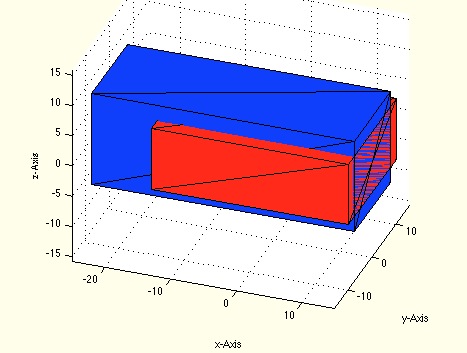PLcat
by Tim C. Lueth, SG-Lib Toolbox: SolidGeometry 5.6 - PL/Point Lists
Introduced first in SolidGeometry 1.0, Creation date: 2013-04-23, Last change: 2025-09-14
returns a concatenated point list of several point list
Example Illustration

Syntax
PL=PLcat([PL])
Input Parameter
PL: | | One or more points lists separated by comma |
Output Parameter
PL: | | resulting concatenated point list |
Examples
PL=PLcat (A,B,C,D)
Copyright 2013-2025 Tim C. Lueth. All rights reserved. The code is the property of Tim C. Lueth and may not be redistributed or modified without explicit written permission. This software may be used free of charge for academic research and teaching purposes only. Commercial use, redistribution, modification, or reverse engineering is strictly prohibited. Access to source code is restricted and granted only under specific agreements. For licensing inquiries or commercial use, please contact: Tim C. Lueth
Algorithm (Workflow)
This algorithm is a MATLAB function named PLcat that concatenates multiple point lists into a single list. It is part of the SG-Library and was created by Tim Lueth on April 23, 2013.
Input Parameters
- PL: One or more point lists provided as input, separated by commas. These lists are passed as variable input arguments to the function.
Output Results
- PL: The resulting concatenated point list, which combines all input point lists into a single list.
Algorithm Explanation
The function PLcat is designed to take multiple point lists as input and concatenate them into a single list. The function uses the following steps:
- Initialize the output point list
PL with the first input argument using varargin{1}.
- Check if there are two or more input arguments using
nargin.
- If there are additional input arguments, iterate over each one starting from the second argument.
- For each additional input argument, concatenate it to the existing
PL using the semicolon operator [PL; varargin{i}], which appends the new list to the existing one.
- Return the concatenated point list
PL as the output.
Example Usage
An example of using this function is PL=PLcat(A,B,C,D), where A, B, C, and D are point lists. The function will concatenate these lists into a single list PL.
Algorithm explaination created using ChatGPT on 2025-08-18 21:49. (Please note: No guarantee for the correctness of this explanation)
Last html export of this page out of FM database by TL: 2025-09-21